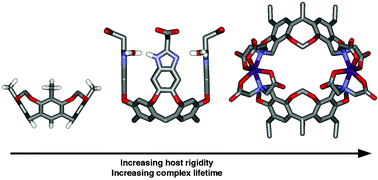Structure and binding properties of water-soluble cavitands and capsules
Abstract
Synthetic receptors are modern tools for investigations into the forces involved in recognition. A widely exploited class of receptors are the resorcin[4]arene-based cavitands and capsules. This critical review (71 references) describes the evolution of water-soluble versions of these structures, along with insights the resulting host–ndash complexes have provided with regard to complexation driving forces in water. An emphasis has been placed on the influence of host structure on guest affinity and dynamics.


 Please wait while we load your content...
Please wait while we load your content...